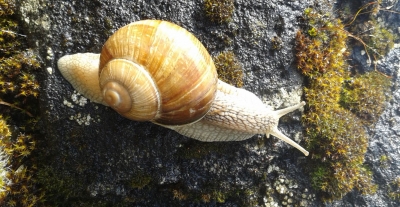
The subclass Ammonoidea, a group that is often referred to as ammonites, first appeared about 450 million years ago.
Ammonoidea includes a more exclusive group called Ammonitida, also known as the true ammonites. These animals are known from the Jurassic Period, from about 200 million years ago.
Most ammonites died out at the same time as the non-avian dinosaurs, at the end of the Cretaceous Period, 66 million years ago.
At the end of the Cretaceous Period, an asteroid colliding with Earth brought on a global mass extinction. A lingering impact winter halted photosynthesis on land and in the oceans, which had a major impact on food availability and was devastating for ammonites.
Nautiloids, however, which had ancient relatives that lived at the same time as ammonites, survived this mass extinction. It is thought this is in part linked to these groups’ preferred water depths.
Scientists can tell species of ammonites apart through several attributes including shell shape, size, age, location, features such as the number and spacing of ribs, defensive spines or shell-strengthening ornamentation.
But figuring out exactly how many species have been found so far is a bit tricky.
Like modern cephalopods, ammonites displayed sexual dimorphism, which is the noticeable difference in appearance between sexes. But when ammonite fossils that looked unique were found in the past, they tended to be recorded as new species instead of as the microconch (male) or macroconch (female) of an existing species, as this difference between the sexes was not yet known about.
However, it is estimated that over 10,000 species of ammonite – possibly even over 20,000- have been discovered.
Credit : Natural History Museum
Picture Credit : Google




